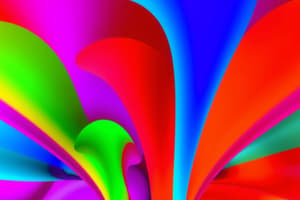Podcast
Questions and Answers
What is the primary reason understanding undertones is important in color selection?
What is the primary reason understanding undertones is important in color selection?
- It enhances the brightness of colors.
- It influences how colors interact with each other. (correct)
- It reduces the number of colors needed.
- It makes colors more vivid in appearance.
Which approach is suggested for beginners to improve their ability to discern color undertones?
Which approach is suggested for beginners to improve their ability to discern color undertones?
- Using brighter colors more often.
- Avoiding neutral colors completely.
- Reading more about color theory.
- Practicing observation skills. (correct)
What might occur if clashing undertones are not considered in interior design?
What might occur if clashing undertones are not considered in interior design?
- The room will always appear larger.
- Colors will become more saturated.
- It may result in a jarring effect in the space. (correct)
- It can create a harmonious atmosphere.
How can neutrals help in recognizing undertones more effectively?
How can neutrals help in recognizing undertones more effectively?
What simple question can be asked to help identify color undertones?
What simple question can be asked to help identify color undertones?
Flashcards are hidden until you start studying
Study Notes
Color Fundamentals in Design
- Color is an essential element in design that influences visual appeal and emotional response.
- Warm colors (reds, oranges) evoke energy; cool colors (blues, greens) induce relaxation.
- The color wheel is a critical tool for selecting harmonious colors, featuring primary, secondary, and tertiary colors.
Color Wheel Structure
- Primary Colors: Red, yellow, blue - foundational hues that mix to create other colors.
- Secondary Colors: Created by mixing two primary colors (e.g., red + blue = purple).
- Tertiary Colors: Result from mixing a primary color with an adjacent secondary color (e.g., blue + purple = blue-purple).
Color Relationships
- Analogous Colors: Colors next to each other on the wheel (e.g., blue-green, green, yellow-green) create harmony.
- Complementary Colors: Opposites on the color wheel (e.g., red and green) produce vibrant contrast.
- Split-Complementary Colors: A base color plus its adjacent complementary colors for visual interest.
- Monochromatic Colors: Variations in lightness or saturation of a single color for a sophisticated look.
Color Temperature and Value
- Warm Colors: Include yellows, reds, and oranges, creating intimacy and coziness.
- Cool Colors: Comprise blues, greens, and purples, fostering spaciousness and tranquility.
- Value: Refers to the brightness or darkness of a color, essential for creating contrast and depth.
Effects of Color on Space
- Visual Temperature: Influenced by environment; a color may appear warm or cool based on surrounding light.
- Color choices can affect moods: blue rooms evoke serenity; green rooms promote freshness and vitality.
Importance of Neutrals
- Neutrals (grays, beiges, browns) balance vibrant colors, grounding the overall palette.
- Undertones in neutrals can reveal subtle nuances, affecting how colors are perceived in different lighting.
Understanding Undertones
- Undertones add complexity to color perception, essential for selecting complementary hues.
- Beginners should practice observing color interactions and ask about undertones to refine their skills.
Practical Applications of Color Theory
- Intensity in colors creates focus areas in design; intense colors attract attention, while low-intensity tones promote calmness.
- Properly combining warm and cool tones enhances overall aesthetics and mood of a space.
Studying That Suits You
Use AI to generate personalized quizzes and flashcards to suit your learning preferences.




